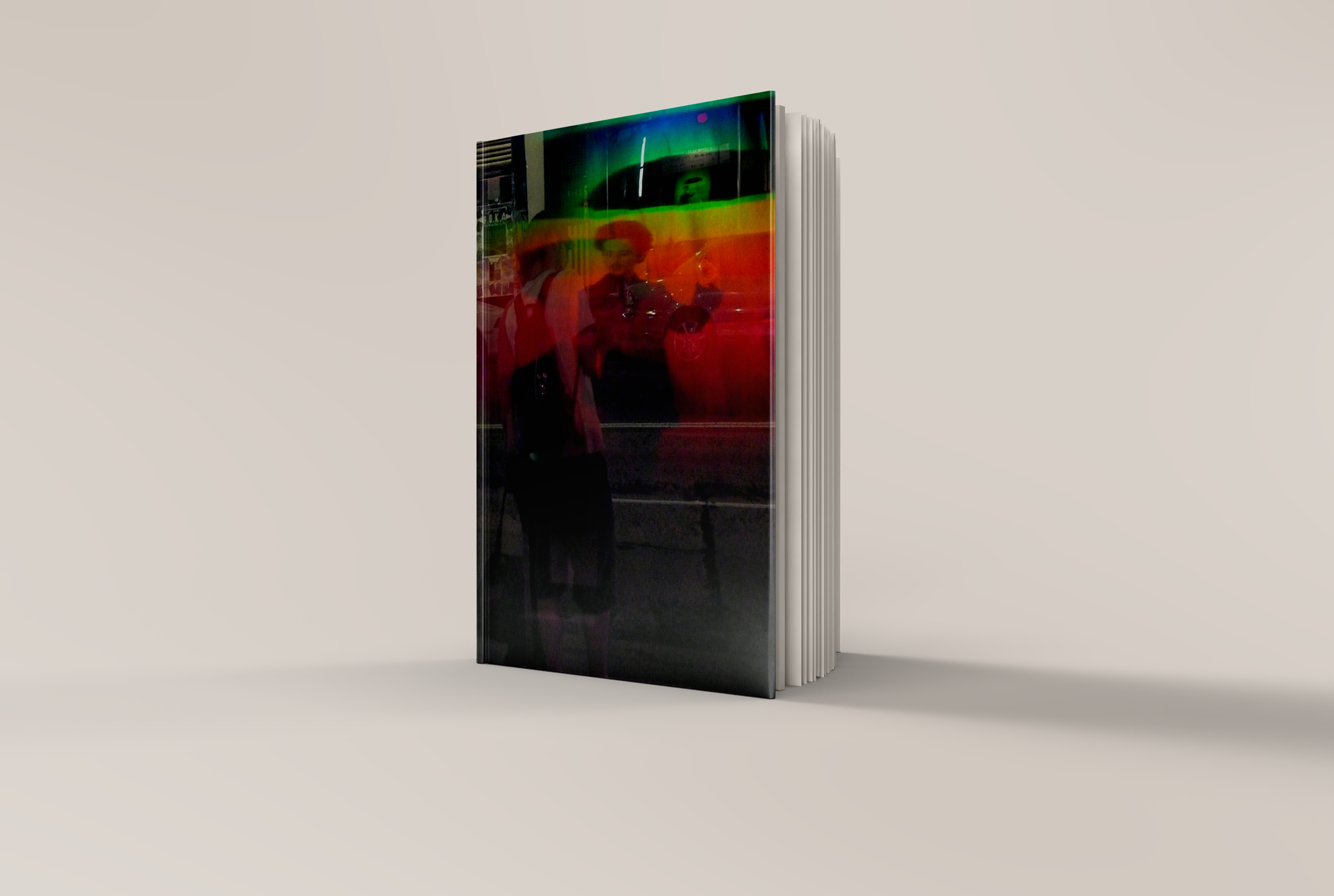The Emergent Holographic Scene
Compositions of movement and affect using multiplexed holographic
images
Illustration of the digital PhD Thesis catalog
The Emergent Holographic Scene
Compositions of movement and affect using multiplexed holographic images
Conventionally, a hologram offers a view into a single space; a window onto a scene. The term ʻhologramʼ, refers to both a method of encoding a spatial image within a physical surface and the reconstructed optical image that is produced through the diffraction of light as it meets with that surface.
A holographic window of perspective allows for bio-ocular depth perception and for the viewer to move as they look from different angles through the hologram. When the recorded visual perspective matches the viewerʼs perceptual sense of space the holographic image produces a visually-realistic volume: a 3-dimensional light sculpture.
This research explores the multiplex or stencilled hologram, which divides the perspective window so that the viewer moving around the hologram perceives a composition of views, superimposed into a holographic scene. Because of this assemblage of perspective views the multiplex hologram has the potential to actively engage the spatial experience of the viewer in a way that departs from the conventional deployment of holograms. In this project-based research the multiplexed holographic scene is used to remap the viewerʼs gaze by connecting it to a composition of multiple, hinged photographic views. This required the development of ways to anchor these multiple perspectives into a holographic structure, achieved through connecting points of visual attention and lines of movement that are then traced into a spatial arrangement of views. The research led to an experimental practice where the composition of holographic images and their installation in physical spaces highlighted and affected the disjunctions and fusions between different systems of perception in the embodied act of looking.
This research aims to convey a series of techniques for the expansion of holography through a design and installation practice that focuses on a visuo-spatial choreography. These choreographies aim to heighten an awareness of the perceiving body – both in the process of capturing images for a holographic scene and during the viewer's exploration of this scene. The projects seek to work actively with the role of movement and multiple perspectives, mapping perceptual shapings and virtual extensions that inform the experience of urban navigation. ʻPerceptual shapingʼ here refers to the perception of an undulation and/or rhythm of dimensions and forces: ʻshapesʼ or diagrams that are mapped through qualities and trajectories of movement. These diagrams or ʻshapesʼ become important in working with ʻa complex sense of locationʼ, an idea developed here to describe how multiple spaces and orientation systems are enfolded. The multiplex hologram then becomes a medium for conducting a diagram of movements.
This research articulates a design practice of holography that focuses on the relationship between bodily movement and the experience of space, where the hologram becomes a device that guides and structures a felt relation between movement and spatial experience. As well as developing the field of display holography, this project-based research aims to point to broader issues relating to the contemporary infusion of visual media and how image-systems and ways of looking, such as a holographic view, shape experience.

